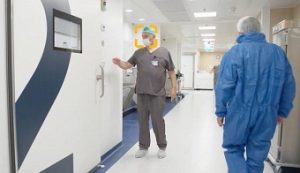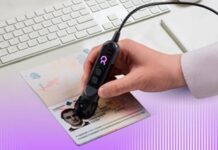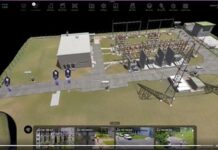
As part of Raphael Hospital’s efforts to minimise the contact of the medical staff with surfaces, Oosto’s facial recognition technology was implemented and enables touchless access control to sterile areas. The private Raphael Hospital, located in northern Tel Aviv, Israel, was built from the ground up to provide excellent medical patient care, as well as the golden standard of hospitalisation with the most cutting-edge technology.
Like any hospital, Raphael Hospital had to deal with cross-contamination, which is the result of the transfer of viruses and germs between patients or between them, and the medical staff. Rafael Hospital’s innovative approach led it to implement new technologies, enabling a touchless journey to sterile areas and significantly reducing the potential for cross-contamination.
Raphael Hospital’s innovative approach to incorporating advanced technologies is evident throughout its modern facility. Specially equipped with advanced robotic-assisted surgery devices, such as the Mako robotic arm and the Da Vinci robotic surgical system, the hospital’s operating theatre was installed with Oosto’s facial recognition-based access control system from its earliest days.
This has enabled Raphael Hospital staff with a touchless journey, which helps support their own infection control protocols, while keeping operating rooms restricted to authorised personnel at all times. This is critical since hospitals’ multiple access points heighten security risks and make them ‘soft targets’, which challenges security professionals to ‘harden’ hospitals, as part of a holistic security protocol.
Moreover, Raphael Cohen, Operations Room Manager for Raphael Hospital, said “Authorised personnel simply go through the doors without having to use keys, cards, codes, or even slowing down,” said Raphael Cohen, Operating Rooms Manager.
Raphael Cohen adds, “We wanted to proactively remove the physical barriers that get in the way of caring for our patients, as efficiently as possible, while offering another layer of protection in the process. Oosto’s OnAccess allows us to do both.”
In addition to the convenience, health benefits, and speed associated with not having to physically open doors in operating areas, Oosto’s OnAccess system helps underscore the importance of the surgical staff’s user experience within the hospital system. Ido Wodnizki, the Chief Information Officer for Raphael Hospital, said “Oosto’s facial recognition technology helps us define sensitive areas, so if an unauthorised person enters this area, the security staff gets an alert in real time.”
Ido Wodnizki adds, “OnAccess gives the team, doctors, and nurses a greater sense of belonging and connectedness to the hospital. They’re an essential part of the hospital, and when the hospital recognises them, and the doors open – it’s effortless for them to get about.” In recent years, there has been a significant increase in demand from hospitals around the world for biometrics-based, real-time image recognition systems.
“The entire healthcare system is evolving towards becoming more personalised and convenient. Advances in modern technology are allowing this to happen, to the benefit of the patient and the caregiver, both,” said Ofer Schmidt, Oosto’s Head of Sales in southern Europe and Israel.
Ofer Schmidt adds, “With health and well-being as the fundamental drivers of the healthcare industry, vision AI-based access control is a natural fit for hospitals, in helping to mitigate health and safety risks throughout the hospital system. Oosto’s technology provides the customisation, personalisation, security, and efficiency in operations that are highly sought after by patient and hospital staff, alike.”











